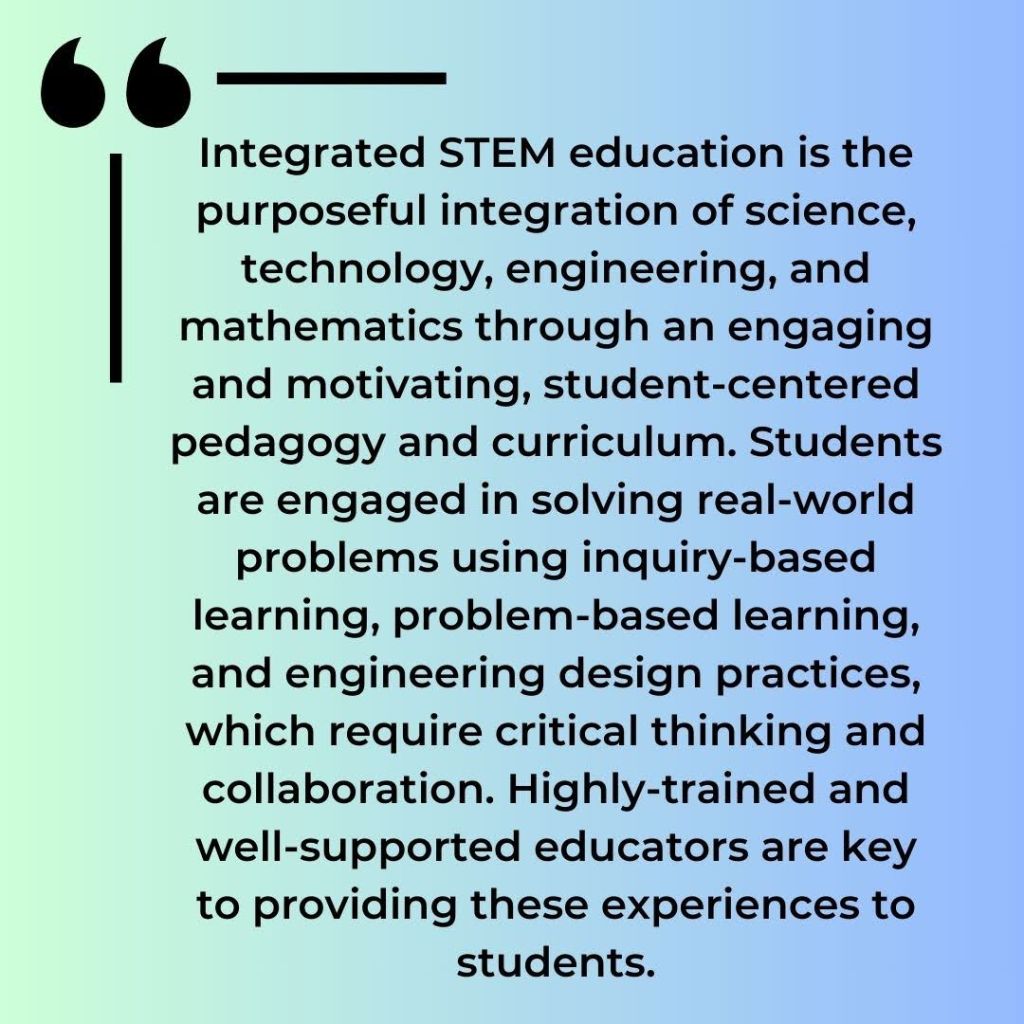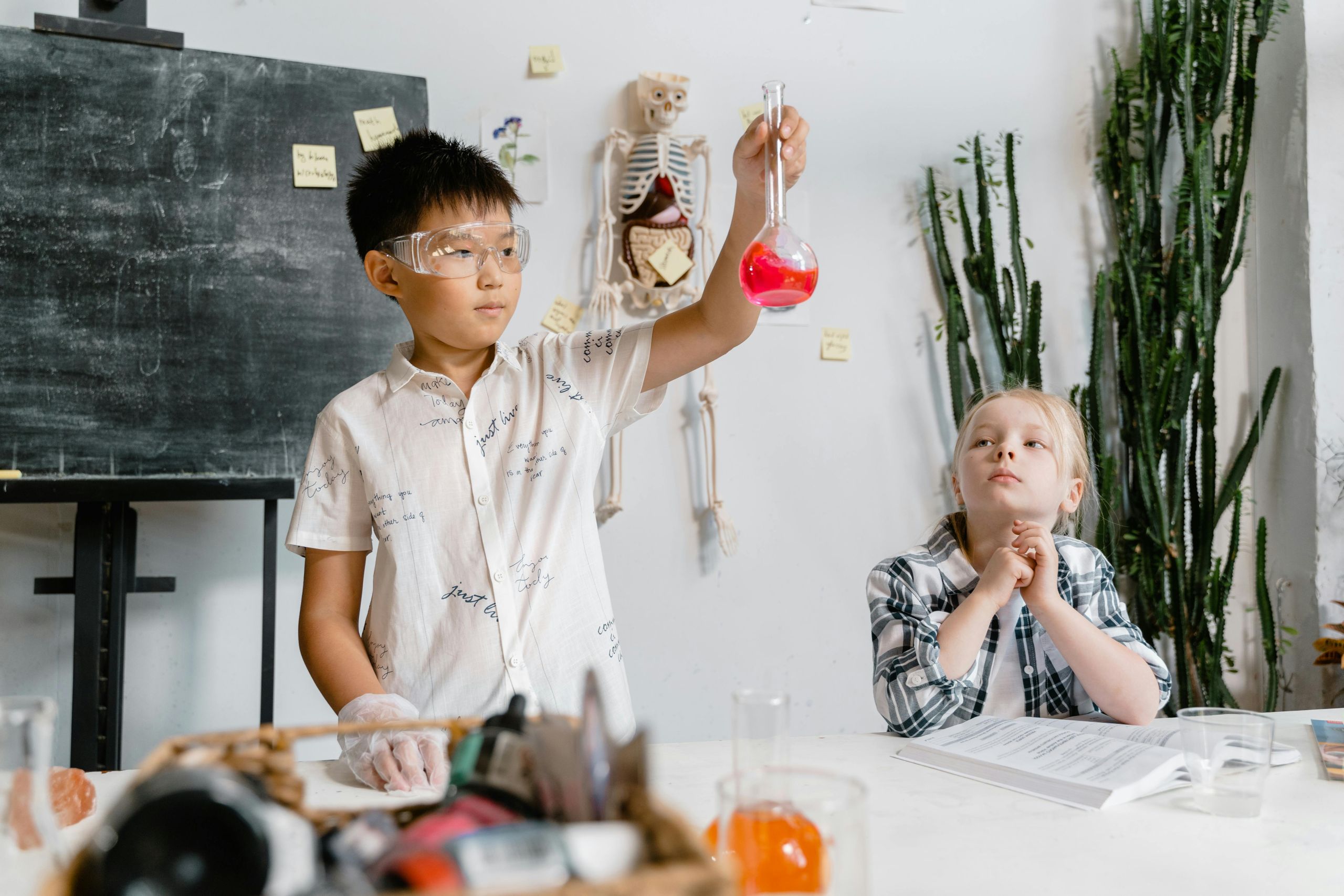Welcome back! In the first part of this series, I discussed how children’s natural curiosity could be encouraged and strengthened in order to ask and answer questions about the world around them. While this strategy is not only applicable to early elementary students, I want to discuss other specific ways to engage upper elementary students (grade 3-grade 5) in integrating STEM skills and processes across all content areas.
As a reminder, integrated STEM can mean different things to different people. In my discussions of integrated STEM, I’m going to lean on my personal favorite definition from Indiana’s Priorities for STEM Education.

While the entire definition helps guide teaching and learning, I believe a few aspects are especially important when working with upper elementary students:
- “Engaging and motivating”–students need to be interested in the work. This means teachers might have to develop a strong hook to build interest. It also is a great opportunity to take advantage of the questions and curiosity of your students to define a problem to solve.
- “Inquiry-based learning, problem-based learning, and engineering design practices”–all are research-based methods, and each has its place in different situations, classrooms, buildings, and student groups.
- “Critical thinking and collaboration”–upper elementary students are primed to be taught how to participate in collaborative work and how to depend on each other based on strengths and weaknesses.
Upper elementary students are amazing in that they are really starting to see the world and community around them and want to participate in everything. They have really strong feelings about fairness, access, and solving problems. This is a perfect recipe for problem-based learning (PBL). In my experience, PBL has just as many different models and definitions as integrated STEM, but all of them have some commonalities. PBL puts the focus on student voice and choice by asking students to answer an authentic, challenging problem or question. In order to find solutions, students must work collaboratively, reflect on and revise their work, and create a product to share with an invested audience. In order to successfully complete their investigation, students must integrate knowledge from many sources as well as build and use skills from across content areas: writing, drawing, discussing, creative thinking, fine and gross motor skills, measuring, estimating, calculating, performing. Many curricular materials provide some PBL-based activities, but if you’d like to learn more about how PBL can be integrated into your content, there are several great resources available online.
Buck Institute for Education PBLworks
Keep Indiana Learning Self-Paced Courses: PBL and Gold Standards
“Problem-solving often involves evaluating and revising, so teachers can model for students how to productively and appropriately deal with failure, and the entire class can see how failures can lead to improvement.”
The Uncomfortable Part
Any time you build new methods into your teaching practice, there will be some discomfort. I’ve found two main barriers with implementing PBL, beyond the perpetual barriers of time, funding, and capacity.
First, teachers need to plan for and admit to failure. Students are going to struggle with their first experiences with PBL, and teachers might have to backtrack, scaffold, reteach, and redesign along the way. This is a wonderful “learning opportunity” for everyone involved. Problem-solving often involves evaluating and revising, so teachers can model for students how to productively and appropriately deal with failure, and the entire class can see how failures can lead to improvement.
Another uncomfortable area can be the need for PBL lessons to grow, adapt, and change. These are not pristine lessons to laminate and keep in a binder. For example, there’s only so many times you can run the same lesson about recycling in your school; at some point the problem has been solved and it’s time to move on. Teachers need to be willing to spend some time learning about their community, the world, their school building that could become a problem-based learning opportunity. This could involve reading, listening to podcasts, watching YouTube videos, or even talking to members of your school or community about current issues.
I’ve always been so thankful for elementary teachers; while I love working with younger students, I’ve spent most of my teaching career with teenagers. Secondary teachers, we’re next! The next two posts in this series will focus on middle and high school classrooms.
Need help with ideas for your classroom? Did you have an amazing experience with a PBL lesson or unit? Reach out; I’d love to hear from you!
Resources
Please login or register to claim PGPs.
Alternatively, you may use the PGP Request Form if you prefer to not register an account.



